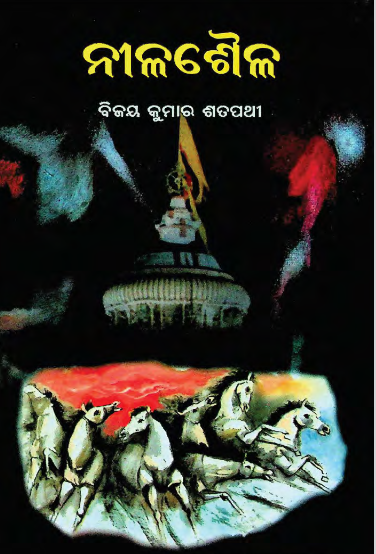Nilasaila, a dramatic masterpiece penned by Bijay Kumar Satapathy, was published in 2003 and stands as a significant contribution to Odia literature and theatre. The play is a compelling blend of historical narrative and human emotion, exploring the rich cultural tapestry of Odisha’s past while delving into the intricacies of personal relationships and societal issues.
Set against the backdrop of the historic Nilasaila (Blue Mountain), the drama invites the audience into a world where myth and history intertwine. It takes inspiration from the legendary stories and folklore of Odisha, particularly focusing on the themes of sacrifice, valor, and the eternal struggle against tyranny. The play features a vivid cast of characters who are emblematic of various societal roles, depicting their dreams, aspirations, and dilemmas as they navigate the complexities of life in a tumultuous era.
At the heart of “Nilasaila” is the protagonist, a heroic figure who stands firm in the face of oppression. This character embodies the spirit of resistance and resilience, reflecting the historical context in which the narrative is rooted. The protagonist’s journey is one of self-discovery, and as he confronts external adversities, he also grapples with his internal conflicts and moral choices. Through this portrayal, Satapathy encourages the audience to reflect on their own values and the significance of standing up for justice.
Surendra Mohanty, a notable figure in the realm of Odia literature, has influenced and shaped many aspects of the play, as his historical insights and narrative style add depth to the dialogue and character development. The sub-drama format employed in “Nilasaila” allows for a multi-layered storytelling approach—melding poignant dialogues and poetic verses with dramatic action, thus enhancing the emotional impact of the narrative.
The dialogues are rich with linguistic beauty, showcasing Satapathy’s artistry and command over the Odia language. The play is structured in a way that each act leaves the audience yearning to uncover the fate of the characters. The use of allegorical figures and symbolism throughout enhances the thematic concerns of the play, drawing parallels between historical events and contemporary societal issues.
Moreover, “Nilasaila” transcends mere entertainment, serving as a medium for social commentary. It challenges traditional norms and prompts discussions around power dynamics, the role of the individual in society, and the quest for identity. The historical context is not just a backdrop; it is interwoven with the characters’ personal struggles, making the narrative relatable to modern audiences.
The production of “Nilasaila” in the theatre showcases the vibrant culture of Odisha, cumulatively engaging the audience through captivating performances, elaborate set designs, and emotive music that enhances the dramatic experience. The visual representation of the historical setting combined with the powerful performances elevates the storytelling, allowing for a deep emotional resonance among the viewers.
In summary, Bijay Kumar Satapathy’s “Nilasaila” is not merely a historical drama; it is a reflection on human existence, the struggle against oppression, and the quest for meaning. Through its rich storytelling and multifaceted characters, the play remains a significant work in Odia literature and continues to inspire both artists and audiences alike. As it engages with timeless themes and cultural heritage, “Nilasaila” stands as a testament to the power of theatre as a vehicle for reflection and change.
Books Info
| Books name | Nilasaila |
| Author | Bijay Kumar Satapathy |
| No Of pages | 82 |
| Publisher | Vidya Prakashana |
| Publication | 2003 |
| Printed At | Laxmi Offset Press |
| Distributor | NA |

